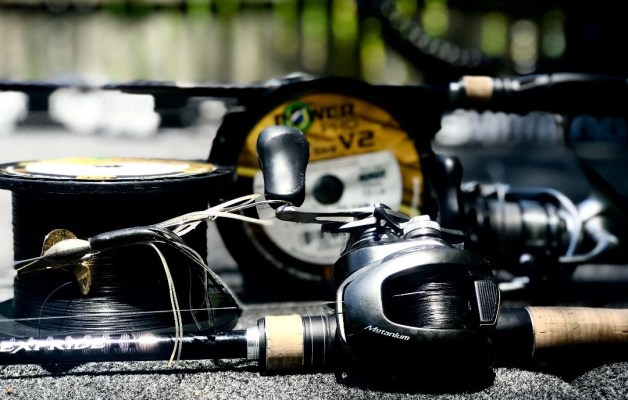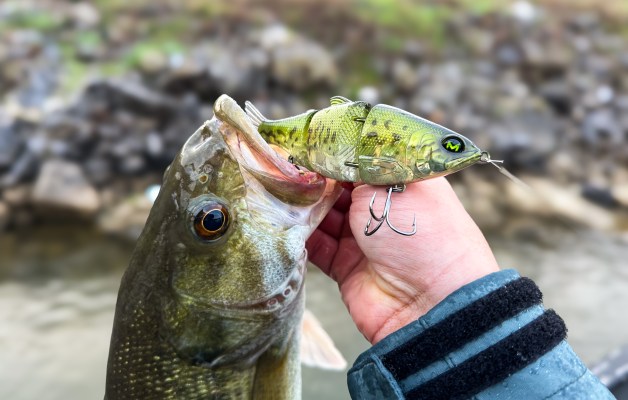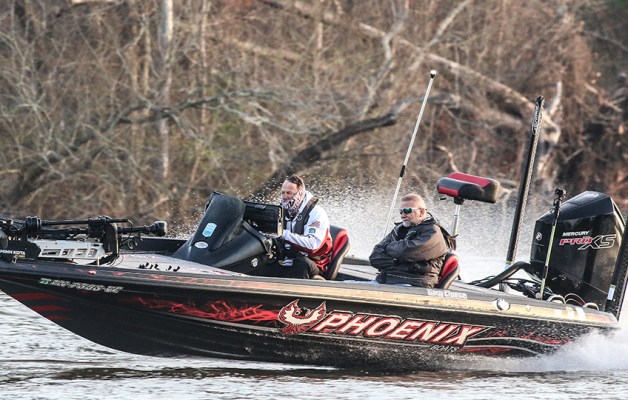We have so many tools in our tackle box that an old standby has been pushed to the back shelf.
The buzzbait.
Trendy baits such as lifelike frogs, toad-style soft plastic baits and other shallow, cover-related lures have captured our attention and rightly so. They’ve proven themselves as solid fish catchers.
But buzzbaits remain a valuable tool as a big-fish lure. The technique is one I keep in the back of my mind, especially when fishing early spring on lakes that are beginning to warm up.
The buzzbait may be more valuable in the South right now where a ton of rain has raised water levels, flooded the bushes, and in many cases, dirtied up the water.
It can be good year round, but late pre-spawn through post-spawn is a time you want one tied on.
There is no magic temperature, but the lure shines when the water temp is between mid-50s and 60s, especially when bass start moving onto the flats and into spawning areas.
What makes this lure a good choice then is it’s so efficient at covering water and attracting big fish.
You can catch bass in clear or muddy water, but a little stain is ideal.
There are other things you need to know. In the early season, it’s imperative to work it slowly. Choose a buzzbait that makes a good disturbance, yet one you can wind at a slow speed. If you crank the bait too fast, you’ll miss strikes or not get bit at all.
You can slow it down by choosing a bigger blade, using a bulky skirt for lift and adding a planing-style soft plastic as a trailer.
I like Strike King’s 3/8-ounce KVD or Tour Grade Buzzbait. The KVD has a gold blade; Tour has a nickel blade. I prefer gold blades when the water is stained.
Strike King also offers a “Perfect Skirt” that is a larger profile and creates more drag to slow the bait. I include the company’s Rage Bug, a flat-style creature bait with great action, as a trailer.
I keep my color choices basic; darker skirts in stained water and perch or bluegill colors in clear.
I always add a trailer hook, too, and prefer a larger 3/0 size like Mustad’s Trailer Hook that has a short shank.
I also want the blade to squeak loudly. We’ve heard for years that you can make a blade squeak by hanging it out the window as you drive down the road. That’s not necessary.
Instead, crimp the shaft of the aluminum rivet so that it can’t spin on the wire arm. Next, rough up the flat end of the rivet that contacts the back of the buzzbait blade. Make sure it is perfectly flat so that there is metal-to-metal contact. Once that’s done, scrape the finish off the back of the blade where it makes contact with the rivet. Do that and you’ll have a buzzbait that squeaks louder than the one you hang out the car window.
If the squeak diminishes after you’ve used the bait for a while, repeat the process.
I fish my buzzbaits on my Quantum KVD medium heavy rods. If fishing tight to individual targets, I use a 6-9 model for better casting accuracy. But when fishing over open areas, like lily pad fields, I prefer a 7-4 or 7-6 length.
I also use my signature series baitcast reel with a 7.3:1 gear ratio. It allows me to get the bait to the surface quickly, yet I can slow it down to a crawl. And, once the lure is away from the target, I can wind it in fast and make another cast.
Above all, use heavy line. I throw buzzbaits on 25-pound monofilament that has some stretch and allows the fish to eat the bait. Fluorocarbon line wants to sink and has less stretch.
If you’re after big fish this spring, revisit those buzzbaits stuffed in a corner. You stand a good chance of tricking more big bass into biting.
Remember, it’s all about the attitude!
Kevin VanDam’s column appears weekly on Bassmaster.com. You can also find him on Facebook and Twitter.





